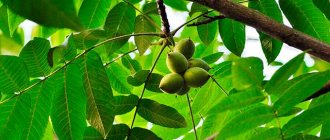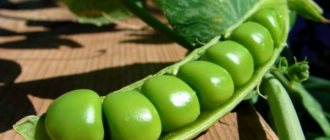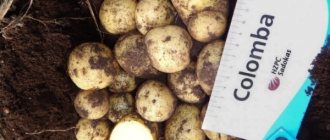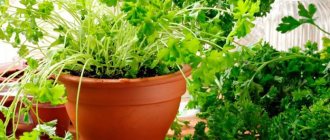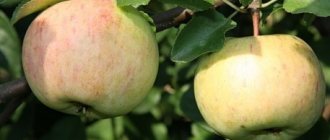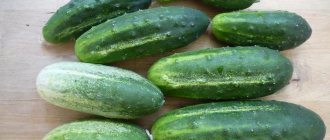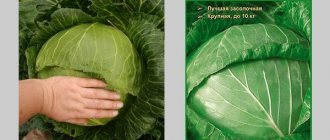Description of Manchurian walnut
Manchurian walnut (another name is Dumbey) is a deciduous tree of the Walnut family, up to 30 m high. Externally, Manchurian walnut is similar to walnut, but there are significant differences. Large leaf blade (can reach 90 cm) with serrated leaves. The fruits are oval, elongated, located on branches of 3-7 pieces, smaller than walnuts, with a hard woody shell.
The bark is initially light, but in mature plants it darkens to almost black. The plant is monoecious, male flowers have black catkins, female flowers have small racemes with inflorescences with pink stigmas. Wind pollinated, blooms in mid to late spring. Fruits abundantly, the harvest appears several years after planting. The fruits are harvested at the end of September. They are eaten and used in the confectionery industry; furniture is made from wood.
Manchurian walnut is popular for landscaping cities and landscaping household plots. Due to its frost resistance, growing Manchurian nuts is possible in regions with cold climates. It is found naturally in the Far East, Sakhalin, China, Korea, the USA and Canada. The lifespan of the plant is 200-250 years.
Nut propagation
Manchurian nut can be propagated by seeds and seedlings. The plant has almost no shoots, so the seed method is more often used.
Propagation by seeds
Fruits from a two-year harvest that have been stored for no more than 3 years are used. Growing Manchurian walnut from seeds at home is allowed even in cold climates; the tree can withstand winter frosts down to -50 degrees. It is not difficult to propagate Manchurian nuts by seeds; the germination rate is 80%. You can plant the seeds in the fall or save them until spring. Before spring planting, the seeds are stratified - simulating winter conditions for planting material. There are different ways to prepare seeds:
- Before spring sowing, the seeds are stored in the refrigerator; 10 days before planting, they are soaked in warm water, changing it regularly.
- soak for a day in warm water, then gradually reduce the temperature to 5-7 degrees over the course of a month;
- The seeds are kept for a month in a room with a temperature of 20 degrees, then placed in the snow.
When planting in autumn, stratification is not required.
Propagation by seedlings
Cuttings are a vegetative method of propagation when a part (cutting) is separated from the mother plant. You can buy a seedling from a nursery or make it yourself. To do this, cut a branch 15 cm long and place it in water. After the roots appear, they are planted.
Growing
Although the homeland of the Manchurian walnut is Northern China, and the natural habitat of the tree is also the Far East and Korea, thanks to its unpretentiousness to cold weather, the crop is able to successfully grow and live in almost any climatic region.
Today there is a practice of growing trees in the Urals, Siberia, the Moscow region, Leningrad and other regions. In Russia, it is widely used for landscaping cities in different latitudes.
Growing Manchurian walnut in the Moscow region, Siberia and the Urals is, one might say, no different: either from seeds or from seedlings. There is only a slight difference in care.
Rules of care in the Moscow region
In addition to all other rules for caring for crops, there are several special ones for caring for a given area.
- When planting in the fall, before the onset of cold weather, young seedlings need to be insulated with non-woven material and covered with a rodent net.
- From mid to late summer, the crop must be fed with fertilizer. Superphosphate works well.
- Every year, with the onset of spring, the tree needs to be rid of frostbitten and diseased branches.
Planting Manchurian walnut
The root system of the Manchurian walnut is deeply penetrating; in a three-year-old seedling it is several times larger than the above-ground part. This is important to consider when leaving space for the plant to develop. It is better to plant a seedling in the soil in the fall (from October to November). The planting hole should be deep with drainage.
Selecting a location
Manchurian walnut is not planted near buildings, because... powerful roots will eventually destroy the foundation of the house. The tree is suitable for areas on the north side. It is important to plant the plant correctly, oriented to the cardinal points - how the seedling grew before transplanting, and also place it in a permanent place.
Soil preparation
It is important to remember that the type of soil is important for Manchurian walnut. Does not tolerate acidity, pH preferably neutral or slightly alkaline.
When preparing the soil before planting, aeration is carried out - loosening the soil to saturate it with air. Before planting, crushed brick, small pebbles and crushed stone should be added to the hole to prevent moisture stagnation. In addition, you should not plant a tree in a place where groundwater rises too high to the surface.
Planting seeds
Before planting, the fruit should be completely peeled. After stratification, planting begins:
- The planting hole is about 70 cm deep.
- Then comes the drainage, followed by the nutrient layer.
- Irrigate and compact slightly.
- The seed is placed on the edge no deeper than 10 cm, sprinkled with earth and mulched.
Each seed can be pre-treated with kerosene to disinfect and prevent damage by rodents.
Planting seedlings
The depth of the hole for planting cuttings should be at least 90-100 cm. The bottom is covered with drainage made of small pebbles, crushed bricks, crushed stone, and gravel. The soil, depleted of nutrients, is enriched with humus. It will be useful to add superphosphate, complex fertilizers based on potassium or wood ash.
Planting stages:
- The tap root of the cutting is shortened.
- Place in the center of the hole and strengthen it by tying it to a support (peg).
- Cover with soil mixture and water. One seedling requires about 10 liters of water.
- After absorption, pour out the rest of the mixture and compact it. Water with 5 liters of water.
- The soil around the seedling is mulched with compost, peat, and dry leaves to retain moisture and prevent freezing.
To prevent the branches of a young plant from freezing as frost approaches, the nut is insulated with burlap or non-woven material.
When is the best time to replant?
Planting is allowed in early autumn in warm regions and in spring in northern latitudes. When planting in the fall, it is better to transplant the seedling at the end of September or at the beginning of October, so that the young plant has enough time to take root before frost. It is preferable to plant in cloudy weather. The seedling should be 1-2 years old at the time of planting.
Care
It is not difficult to grow a nut, since the plant does not require much care.
After planting, care consists of regular irrigation, fertilizing, mulching, protection from frost and parasites.
In addition, the plant should be protected from rodents. To do this, install a fine-mesh metal mesh about a meter high at a distance of 10–15 cm from the tree trunk. To prevent sunburn, whitewash the trunk or plant tall trees nearby: linden, birch, beech, spruce.
Watering
Walnut trees have a high need for moisture, the plant is irrigated regularly, avoiding stagnation of liquid. At normal levels of precipitation, adult plants are watered 5 times per season, young plants - twice as much. During drought, 15-20 liters are irrigated weekly. By autumn, watering is reduced, allowing the nut to prepare for winter.
Selection of fertilizer and feeding
Once during the growing season (preferably in June), the nut is fertilized with phosphorus-potassium compounds. You can feed it with nitrogenous fertilizers in the spring, and in the winter with wood ash, which contains a set of macro- and microelements necessary for the normal development of the crop and obtaining a large harvest.
Mulching
Mulching allows you to retain moisture in the soil, insulate the roots from frost, and protect from weeds and sunlight. It is advisable to mulch Manchurian walnut immediately after planting. Sawdust, peat, moss, and hay are used as mulch.
To enhance the effect of mulching, it is advisable to do it immediately after fertilizing. When using organic matter, the mulch layer depends on the material: moss - 10 cm; sawdust -7 cm; foliage or hay - 10-15 cm.
Preparing for winter
In the fall, you need to protect the trunk of the Manchurian walnut from the approaching frosts by wrapping it in felt, matting, burlap, or agrofibre. For insulation, you can build a frame, filling it with sawdust on top or wrapping it in non-woven material.
Acrylic or latex-based garden paint will help increase resistance to frost and protect against burns.
Pests and diseases
The Manchurian walnut variety has good immunity, but diseases can affect the condition of the leaves, bark, and branches. Each disease has causes and progresses with its own characteristics:
- Black spot is a fungal disease that occurs in high humidity. It manifests itself in the formation of small dark spots on the leaves of the plant. In the absence of treatment, part of the crown of the Manchurian walnut dies off and the tree weakens. Copper solutions are used for prevention and treatment.
- A tinder fungus that destroys wood, causing the nut to dry out. The mushrooms must be cut off and burned, and a solution of copper sulfate should be applied to the affected areas.
- The gallworm is a parasitic insect that attacks the bark, leaves and flowers of trees. You can get rid of the pest by cutting off the affected branches. If large areas are affected, spray with insecticides: decis, kinmiks, carfobs.
- Fire blight is an infectious disease caused by bacteria of the genus Erwinia. It manifests itself as darkening and wilting of inflorescences, then leaves, young branches and bark are affected. Treat with Bordeaux mixture and antibiotics.
- Gall-forming mite - affects leaf blades and deforms young shoots. To get rid of it, they spray it with organophosphorus compounds, neonicotinoids, and pyrethroids. Severely damaged branches are removed and burned.
When properly grown, the Manchurian nut develops quickly and produces its first harvest within a few years after planting. In addition to regular irrigation and prevention of bacterial and fungal diseases, you should weed and loosen the soil around the trunk.
Pests and diseases
Manchurian walnut is quite resistant to fungal diseases, but is sometimes affected by them. You can notice this by the blackening leaves that dry out quickly. To cure the nut, they are treated with fungicides, always several times at intervals of 2 weeks.
Black spot affects Manchurian walnut if there is a lot of rain or the tree is over-watered. The cause of the disease is a fungus. You can fight it with Bordeaux mixture or any copper-based preparation. For a guaranteed result, two treatments will be required.
Gall mites can damage a tree. These pests hide in the buds for the winter, and with the arrival of spring they lay eggs and spoil the leaves. This manifests itself in the form of tubercles on the leaf blades. To eliminate the pest, before the buds bloom, you should spray with sulfur-based preparations. After the buds open, the plant is treated again, but this time Fufanon is used, Abamectin is suitable, and acaricides can be used. Those branches that are heavily damaged by mites must be pruned and burned.
Sometimes a nut roller, a small insect, a two-winged insect, settles on a tree. It can be destroyed by spraying the tree with such agents as Chlorophos or Karbofos. Those branches of the nut that are severely damaged are cut down and must be burned outside the site.
Manchurian walnut is a tree that can be grown for its fruits in a summer cottage, as well as for landscaping in cities. Unpretentious and frost-resistant, it will delight its owners for a long time, purify the air and repel mosquitoes. Growing a tree from a nut or seedling is not difficult, you just need to be patient.
